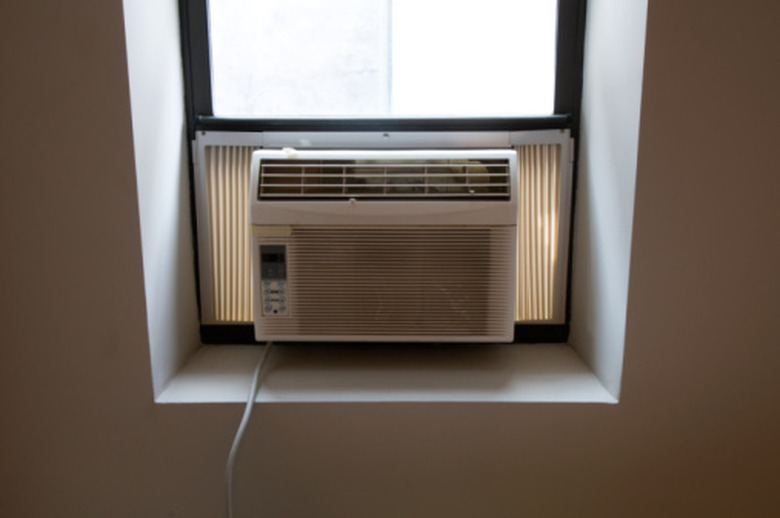Physical Properties Of Freon 12
Freon 12 is the Dupont brand name for the chemical dichlorodifluoromethane. Freon 12 and similar chloroflorocarbons were first recognized as being potentially useful as a replacement for ammonia in refrigeration systems in the early 1900s. Due to its unique properties, Freon 12 was particularly suited for this purpose and was very widely employed as a refrigerant and also a propellant in spray cans until 1994, when it was banned under the Montreal Protocol as an ozone-depleting chemical.
General Physical Properties
General Physical Properties
Freon 12 is a colorless gas at room temperature, although it is typically compressed to a liquefied form. It is normally odorless, although at high concentrations in air (greater than 20 percent by volume) it has a faint ether-like smell. It has the chemical formula CF2Cl2 and a molecular weight of 120.91 grams per mole. Freon is slightly soluble in water at a level of approximately 0.3 grams per liter at room temperature. It has a high vapor pressure of 568 kiloPascals at room temperature and readily vaporizes at this temperature. It has a very low melting point of -158 degrees Celsius and a boiling point of -30 degrees. As a liquid it has a density of 1.486 grams per cubic centimeter.
Chemical Properties
Chemical Properties
Freon 12 is highly inert and nonreactive. It is also nonflammable. The original process used to synthesize Freon 12 on a lab scale was based on the reaction of carbon tetrachloride with hydrofluoric acid and a catalyst as follows: CCl4 + HF + SbF3Cl2 (catalyst) –> CFCl3 + CF2Cl2 (Freon-12) + HCl. Although Freon 12 is nonreactive, it has been shown to be a powerful ozone-depleting chemical when dispensed into the upper atmosphere. The reaction which leads to ozone depletion involves attack on a Freon 12 molecule by UV light, leading to the generation of a chlorine radical which then goes on to react with ozone to change it into oxygen.
Thermodynamic Properties
Thermodynamic Properties
Freon 12 has a number of thermodynamic properties which make it suitable for use as a refrigerant. These were especially taken into consideration when it was being tested as a replacement for ammonia. Most importantly, its latent heat of vaporization is 22 kilojoules per mole, which is only slightly below the 24 kilojoules per mole value for ammonia. Other thermodynamic properties of Freon 12 are a specific heat capacity (Cp) at 30 degrees Celsius of 74 Joules per mole – degree Kelvin and thermal conductivity at 0 degrees Celsius of 9.46 milliwatts per meter – degree Kelvin.
Properties Related to Safe Handling
Freon 12 is generally considered safe and nontoxic under normal conditions. Toxicity due to chronic exposure by oral ingestion by rats was determined to occur at the level of 380 milligrams per kilogram body weight. The main safety hazard presented by Freon 12 is as an asphyxiant in situations where Freon 12 displaces breathable air. However, inhalation of the gas at lower concentrations can also induce anesthesia. Observable effects in humans are seen in the range of 500-1,000 parts per million in air. Although generally nonreactive, Freon-12 may react with aluminum and can form toxic degradation products such as hydrochloric acid when exposed to very high temperatures.
Cite This Article
MLA
Judge, Michael. "Physical Properties Of Freon 12" sciencing.com, https://www.sciencing.com/physical-properties-freon-12-8059751/. 24 April 2017.
APA
Judge, Michael. (2017, April 24). Physical Properties Of Freon 12. sciencing.com. Retrieved from https://www.sciencing.com/physical-properties-freon-12-8059751/
Chicago
Judge, Michael. Physical Properties Of Freon 12 last modified March 24, 2022. https://www.sciencing.com/physical-properties-freon-12-8059751/
